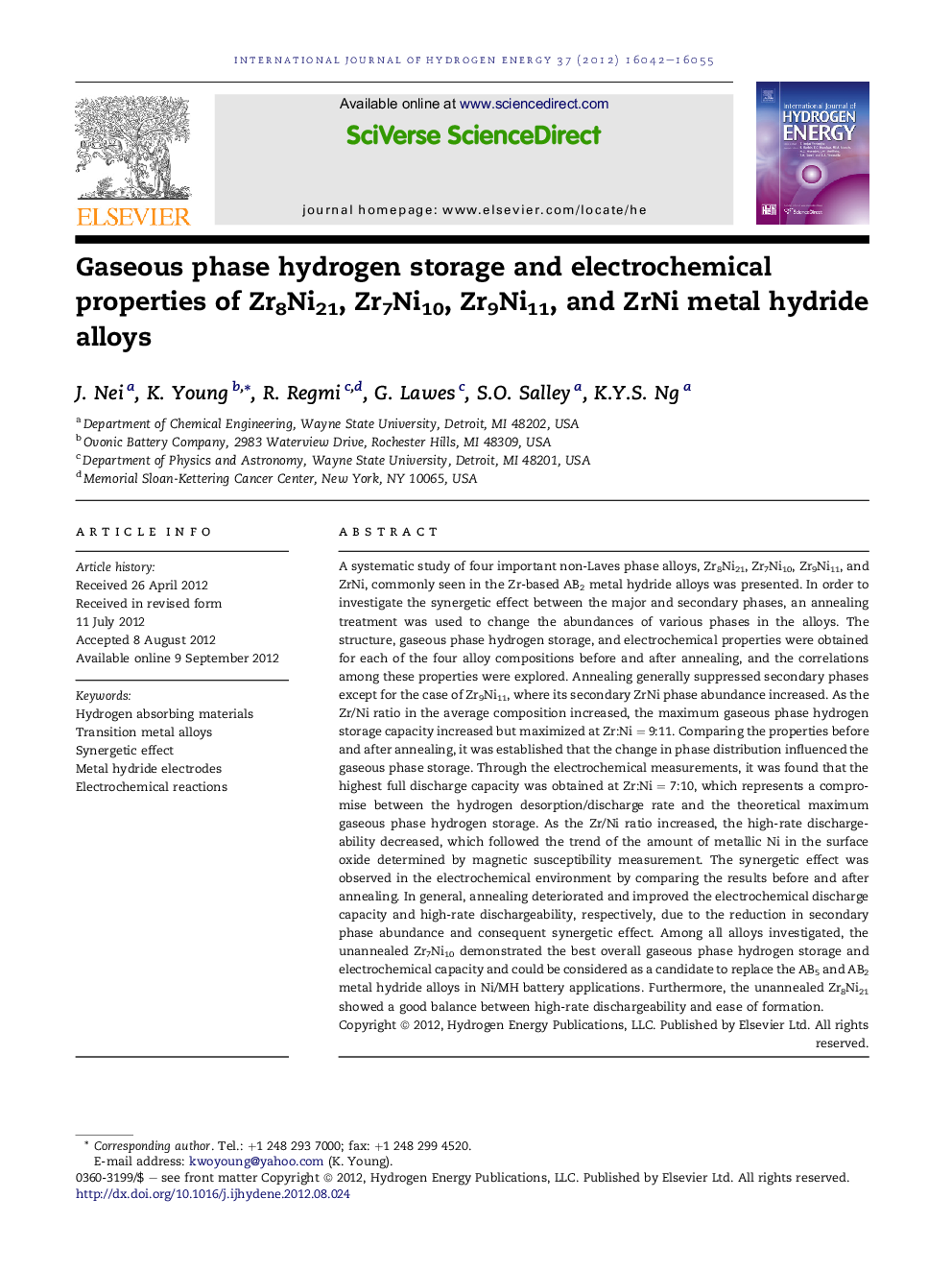| Article ID | Journal | Published Year | Pages | File Type |
|---|---|---|---|---|
| 1282134 | International Journal of Hydrogen Energy | 2012 | 14 Pages |
A systematic study of four important non-Laves phase alloys, Zr8Ni21, Zr7Ni10, Zr9Ni11, and ZrNi, commonly seen in the Zr-based AB2 metal hydride alloys was presented. In order to investigate the synergetic effect between the major and secondary phases, an annealing treatment was used to change the abundances of various phases in the alloys. The structure, gaseous phase hydrogen storage, and electrochemical properties were obtained for each of the four alloy compositions before and after annealing, and the correlations among these properties were explored. Annealing generally suppressed secondary phases except for the case of Zr9Ni11, where its secondary ZrNi phase abundance increased. As the Zr/Ni ratio in the average composition increased, the maximum gaseous phase hydrogen storage capacity increased but maximized at Zr:Ni = 9:11. Comparing the properties before and after annealing, it was established that the change in phase distribution influenced the gaseous phase storage. Through the electrochemical measurements, it was found that the highest full discharge capacity was obtained at Zr:Ni = 7:10, which represents a compromise between the hydrogen desorption/discharge rate and the theoretical maximum gaseous phase hydrogen storage. As the Zr/Ni ratio increased, the high-rate dischargeability decreased, which followed the trend of the amount of metallic Ni in the surface oxide determined by magnetic susceptibility measurement. The synergetic effect was observed in the electrochemical environment by comparing the results before and after annealing. In general, annealing deteriorated and improved the electrochemical discharge capacity and high-rate dischargeability, respectively, due to the reduction in secondary phase abundance and consequent synergetic effect. Among all alloys investigated, the unannealed Zr7Ni10 demonstrated the best overall gaseous phase hydrogen storage and electrochemical capacity and could be considered as a candidate to replace the AB5 and AB2 metal hydride alloys in Ni/MH battery applications. Furthermore, the unannealed Zr8Ni21 showed a good balance between high-rate dischargeability and ease of formation.
► Phase distribution influences gaseous phase storage. ► Electrochemical capacity is governed by both gaseous phase storage and rate. ► Synergetic effect improves electrochemical capacity but worsens high-rate property. ► Corrosion resistance based on alloy heat of formation affects high-rate property.
